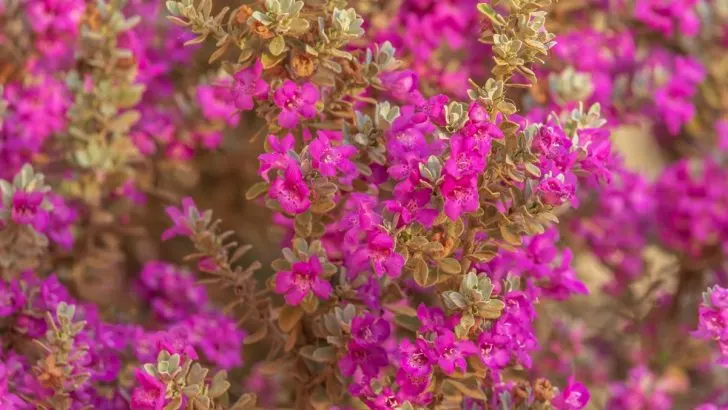Texas sage is a plant that can almost grow perfectly well on its own. Learning the care guide for a texas sage plant will be your new favorite thing.
Such a plant sounds pretty attractive, isn’t it? Putting almost no effort into it for silvery foliage and purple flowers. It honestly sounds appealing to me.
They are grown and planted in the early spring mostly. It’s not springtime soon, but it’s good to be prepared, right? If you want to welcome an excellent plant next spring in your garden, stay with us.
Below we bring you the ultimate care guide for a texas sage shrub. Learn how to water texas sage, how to do a foundation planting with it, and much more about this rocky slopes native plant.
Let’s dig into the care guide and other growing habits of a sage plant you’ll completely love.
About Texas Sage Plants
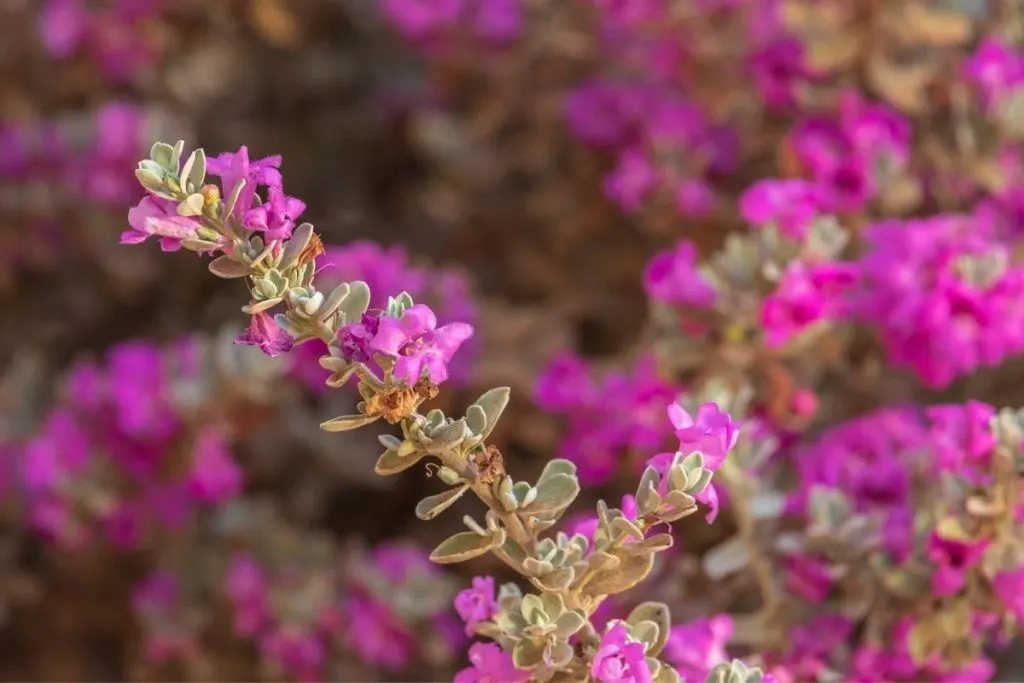
Before you learn how to grow texas sage, we think it’s important to learn about its features a bit. These slopes native plants will brighten up your garden with their simplicity.
Their silvery foliage has characteristics you’ll fall in love with. It’s one of the low-maintenance plants in Arizona. Among that, they’re not needy at all! Before growing texas sage, let’s see what are its botanic features first.
- Native habitat: rocky limestone slopes, trans-pecos
- Common names: texas ranger, purple sage, barometer bush, rain sage, etc.
- Botanic name: Texas sage Leucophyllum frutescens
- Family: Scrophulariaceae
- Subfamily: Salvieae
- Type of plant: drought-tolerant shrub, evergreen, blooms in summer, among perennials that bloom all summer
- USDA hardy zone: 8-10
- Leaf shape and color: oval leaves, pale green, silvery foliage
- Flower shape and color: funnel.shaped, purple
- Use: landscape and indoor plant
- Height: 6 feet tall
Is Texas Sage The Same As The Purple Sage?
Texas sage is the same plant as the purple sage. Purple sage is actually a common name for the texas sage plant. Why? Of course, we all know the answer.
Texas sage has well-known purple blooms and it is named after it. Among this name, we mentioned some other common names this plant has such as Texas ranger and many others.
Is Texas Sage Toxic?
Texas sage doesn’t have any toxic qualities. Most people that have kids and pets ask themselves this question first before getting a new plant. Luckily for you, it is safe as one plant can be.
Your kids and curious pets can even eat it, it will still be safe. There is a myth that its bloom might be toxic, but flowers along with the leaves are also safe.
Care Guide For A Texas Sage Plant
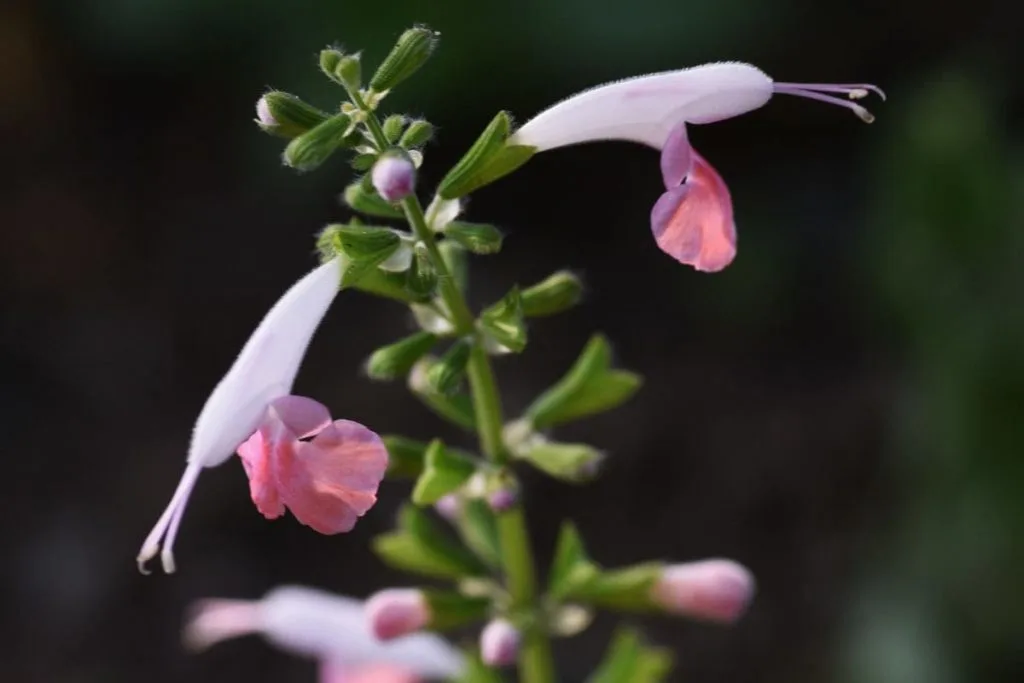
How about we learn everything about the care guide for a Texas sage plant below? In case you’re not sure if its growing habits will fit your schedule and duties, you’ll find all about it here.
However, we can already tell you that its care guides it’s quite simple and will fit anyone’s schedule. Let’s check it out then.
Light Conditions
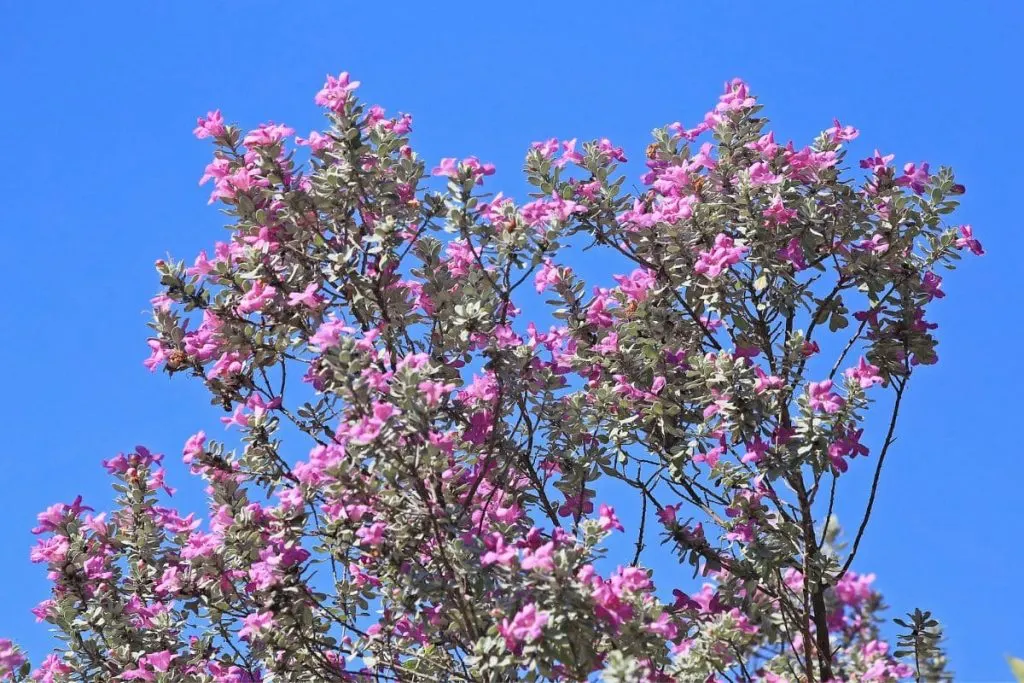
You can already assume that a plant that grows on rocky slopes needs a lot of sun. Indeed it is. In such locations in nature, this plant receives more than 7 hours of sun. In this way, its growth is aimed at growth with the help of the sun from the very beginning.
In the shade, and even in many hours of partial shade, this plant will not grow. You will notice its stunted growth, it will not grow to its maximum potential, etc. In the shade, this plant will not even bloom on time.
Although it normally blooms all summer, the shade can ruin it. So instead of June, July, August, and September, you will have a plant that blooms only in July. How to avoid all that?
Plant it in a location where it gets between 6-8 hours of sun. Although most plants prefer the morning sun because it is milder, this plant can also tolerate the strength of the afternoon sun.
Do Texas Sage Plants Need Full Sun?
Watering Schedule

The watering schedule for this plant is very simple. This is one of the things that should be your least concern with this plant. Most plants that grow on rocky slopes tolerate drought.
If you think about it, you yourself know that there is absolutely no water and humidity on the rocky slopes. Plants are used to dryness and over time have become resistant to such conditions.
Because of this, your garden can be without water for up to 14 days. If you’re going on a two-week vacation, don’t worry. There is no need to hire neighbors to water it. The plant will use its reserves for a time.
The rest of the time she will be just fine as she has developed a tolerance for dry weather. When you return, they water it with the amount you used even before those 14 days of drought.
Soil Type
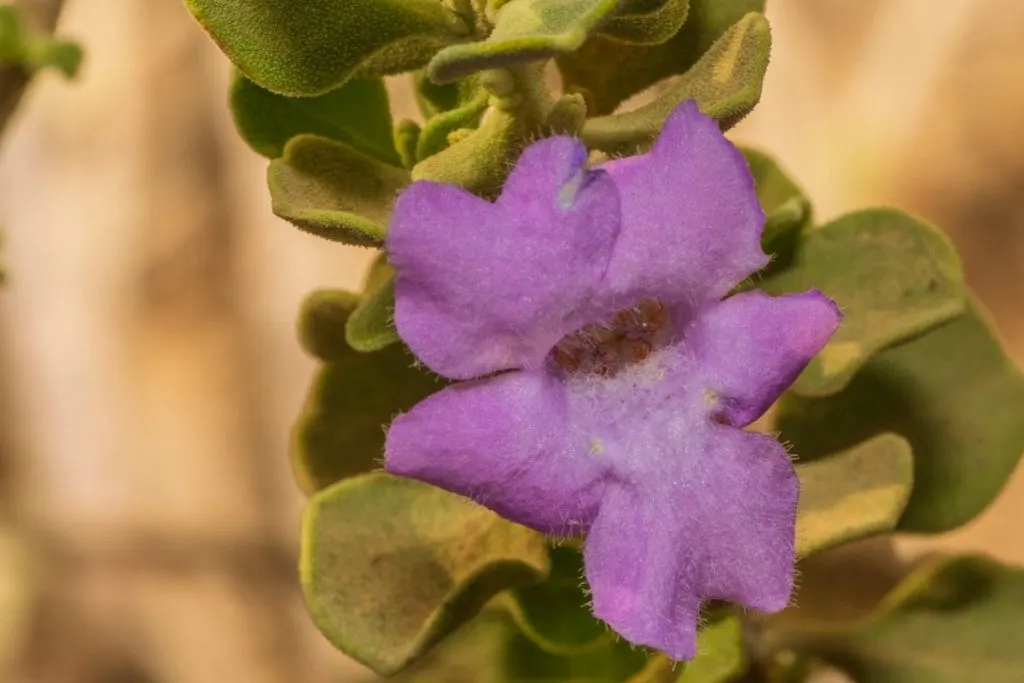
The most suitable soils for this plant are neutral to alkaline soil ranging. This includes soil pH between 6.5 and 8. pH values.
On rocky slopes, this plant usually grows in sandy soil that is extremely dry. Of course, it is not even similar to the soil that we recommend. But here we are talking about the ideal conditions for your plant in which it will grow and bloom perfectly.
Of course, you can also plant it in sandy soil. Since the plant is drought tolerant, this plant will retain water for a very long time. This is exactly what this plant needs.
Fertilizer
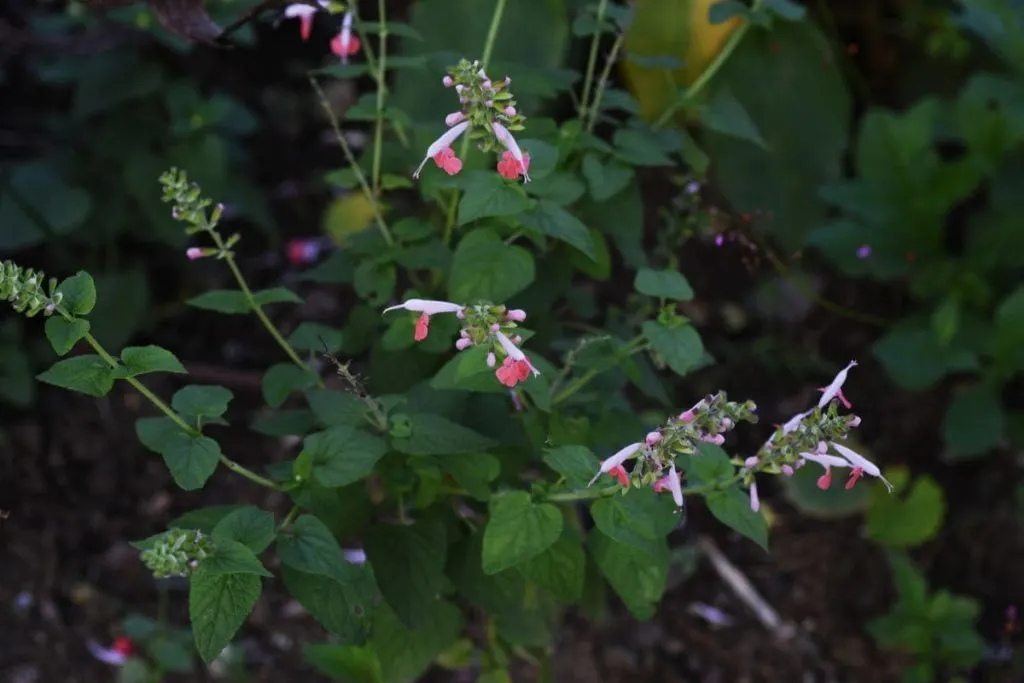
We said at the beginning that this is a low-effort and low-maintenance plant for a reason. Why?
This is one of the plants that does not need fertilizer at all to grow better. Of course, you can always fertilize a plant that does not need fertilizer.
But will this proven and effective magically change her growth? I’m not really sure. This plant is used to dry and raw soil, and that’s why it doesn’t need ideal conditions when it comes to fertilizer.
Humidity
Dry air is another thing this plant is used to. In the desert and similar locations where it grows by itself, this plant is surrounded by dry air, and dry soil, without any water or rain.
In such conditions, it has developed resistance to dry air. In fact, too humid air can be fatal for this plant. 40 and 50% humidity are just fine for this plant.
Temperature
This plant loves heat. The heat and strong sun encourage this plant to grow as high and fast as possible.
This is why hardy zones 9-11 are the best for this plant. It can grow in cold temperatures, but not nearly as well as in heat.
Can Texas Sage Survive Winter?
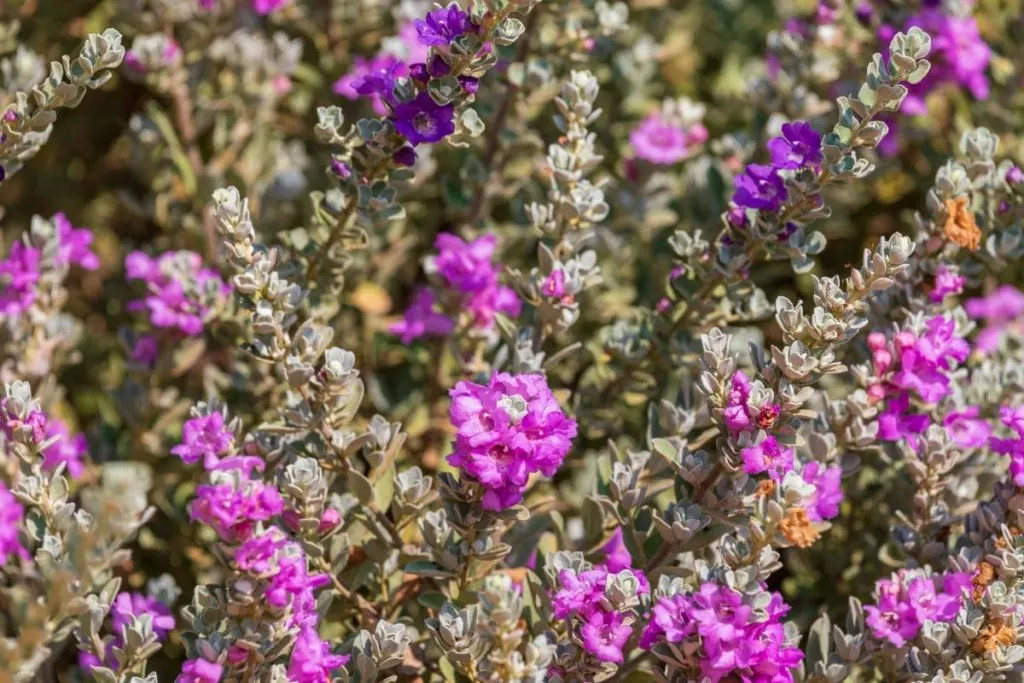
Texas sage plant is more heat tolerant than it’s cold tolerant. As we mentioned in the beginning, it can grow well in hardy zones from 8-9. Those zones don’t include final frost.
But over time, people started planting them in these colder regions too, so now, it is cold tolerant plants too. It will most likely die in any zone below 5.
But as long as the cold weather doesn’t constantly continue it will be okay. You can provide them with good drainage and everything else, but the plant simply doesn’t thrive well in temperatures below 20 F.
Pruning
Pruning is only necessary when your shrub reaches a huge size. People regularly prune plants in their gardens to reduce their size.
When it becomes a nuisance in your garden or a nuisance to other plants, prune it. And of course, in conditions of damage that affects the stem or leaves.
Propagation
Propagate this plant by cuttings or seeds. It’s really up to you. But cuttings are a very difficult method and rarely succeed unless each separate protocol is followed.
The stems are very fragile and take a long time to germinate. Through the process of reproduction with seeds, you will reach your goal faster.
Wrapping Up
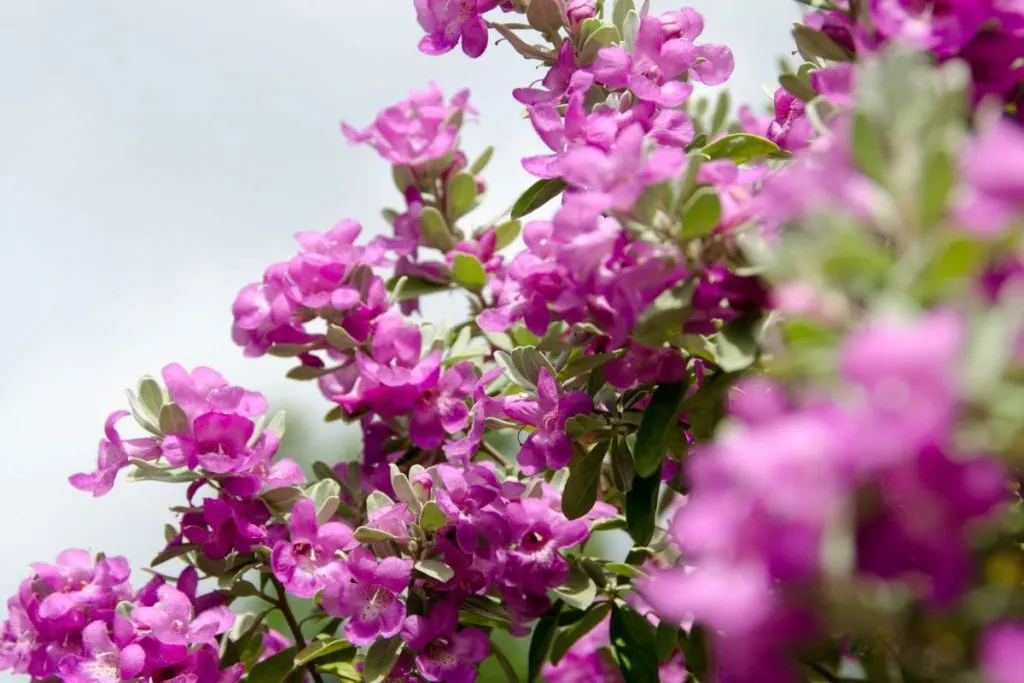
And, how did you like our article on the texas sage plant? Does this plant seem like a new plant for your yard?
If you don’t have enough time to take care of plants lately, don’t hesitate, to get this plant.
you won’t have to worry and think about her much, and she will still give you beautiful purple flowers in return. Isn’t that ideal?
If you liked this article, we hope you will take a look at some other similar articles about low-maintenance plants on our site.
That’s all for today, see you tomorrow with similar topics.

